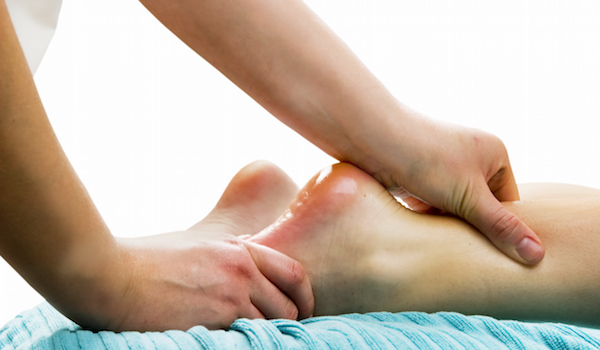Feet are the basis of our everyday lives. They’re the foundation of our mobility and have the ability to impact our quality of life significantly. Pain or discomfort in our feet can lead to some serious problems. Podiatrists, also known as foot doctors, are here to help save our dear piggies. But, how do we know it’s time to make an appointment?
Knowing when to take action is the first step. How bad does the pain have to be? Well, there doesn’t necessarily have to be a throbbing pain to see a podiatrist. Unnatural swelling of the foot, toes or ankle are reason enough to make an appointment. Taking care of our feet is immensely important in order to maintain a normal life.
NAIL FUNGUSA
good time to schedule an appointment is when unwelcomed fungus begins growing on or in your toenails. Or, if you notice any discoloration, deformity or thickening of the nail. None of the things listed above indicate a healthy, happy foot. Fungal infections have a not-so-fun way of getting worse over time and can be especially serious if you have or someone in your family has diabetes. The longer the nail’s left untreated, the higher the risk is of the infection spreading throughout the body. A nasty fungus can also cause permanent damage to the nail bed.

INGROWN TOENAILS
An ingrown toenail occurs when your toenail begins to grow into the skin of the toe. It’s terribly painful and proves to be quite inconvenient for those suffering with one. The condition is caused by cutting a toenail too short or from wearing shoes that are too tight/short. People with sweaty feet, such as teenagers, have a higher chance of developing an ingrown toenail. Older adults may have a high chance in getting one because our toenails begin to thicken with age.
Signs that an ingrown toenail may be developing include the skin next to the toenail becoming red, tender, swollen or hard. Also if you feel pain while applying pressure to that toe or see fluid building up, you might have an ingrown toenail. Not all ingrown toenails become infected, but if the skin begins to feel warm and form pus, there might be an infection brewing. Home remedies to treat your own nail include soaking the foot in warm water for 15-20 minutes three to four times a day, using tylenol, applying a topical antibiotic or pushing the skin away from the toenail edge. If the infection progresses, it might be a good idea to schedule an appointment. Luckily, Specialty Care Clinics now has podiatrist Dr. Payam Rafat that can help treat all things regarding feet.

BUNIONS
So, what exactly is a bunion? Well, a bunion is a bony bump that develops on the big toe joint and can also be found on the pinky toe joint. It’s very painful and makes walking quite the challenge. Although not as common as ingrown toenails, bunions still affect 23% of adults between the ages of 18-65 and 35.7% of people over the age of 65. Due to shoe choices, bunions happen to be more common in women than men.
In most cases, bunion pain can be treated from home by wearing shoes with a wide toe area and using padding/shoe inserts. Oral medication and ice packs do well at reducing bunion pain as well. If home remedies don’t decrease the pain, that’s when you should consider making an appointment. Podiatrists, like Dr. Rafat, are highly skilled in surgically removing bunions. Now, the surgical removal of bunions shouldn’t occur for merely cosmetic reasons. Surgery shouldn’t be considered unless the bunion pain interferes with daily activities. If the toe begins to bend toward the other four, surgery should be considered.
VERRUCAS & NEUROMAS
Of the two, pain caused by neuroma is more severe than verrucas. Neuroma is a condition commonly referred to as a pinched nerve or a benign nerve tumor. It’s usually found between the third and fourth toe causing pain while walking. A burning, tingling and numbing sensation can be felt between the toes and on the ball of the foot. The majority of neuroma patients are women. The exact cause of this condition isn’t known, but having a high-arched foot or a flat arch can lead to neuroma formation. You should contact a podiatrist at the first sign of pain and discomfort
Verrucas, also known as plantar warts, are small, rough bumps or lesions that are commonly found on heels and the balls of our feet. This condition tends to resolve on its own, but if there’s severe pain or an altered posture while walking, it’s time to make an appointment. Like neuromas, women are more commonly affected than men. Verrucas is caused by the viral infection Human papilloma virus (HPV) 1 and 2. The HPV attacks the top layer of skin and causes a growth to form and spreads from person-to-person contact. There’s often not a treatment for verrucas if there’s no pain, but the warts can be frozen off. The painful cases are treated with salicylate medications available as gels and other creams; surgery is rarely used.
Podiatrists treat many more diseases and infections than the five listed above. They also treat conditions as severe as amputations, broken bones, prosthetics, etc. You should always schedule an appointment with a podiatrist if any pain in your foot interferes with daily activities. With the new addition of podiatrist Dr. Rafat to our team, we hope to help our patients combat any form of pain or discomfort they feel.
